Tariff Classification of Gloves
Memorandum D10-14-29
Ottawa, May 20, 2020
This document is also available in PDF (287 KB) [help with PDF files]
In Brief
- The revisions in this memorandum clarify the tariff classification of gloves, reflect changes in the Customs Tariff legislation, and include references to relevant jurisprudence.
This memorandum explains the Canada Border Services Agency's (CBSA) administrative policy regarding the tariff classification of gloves. Throughout this Memorandum a reference to gloves includes a reference to mittens and mitts.
Legislation
Departmental Consolidation of the Customs Tariff
Headings
- 39.26 Other articles of plastics and articles of other materials of headings 39.01 to 39.14.
- 40.15 Articles of apparel and clothing accessories (including gloves, mittens and mitts), for all purposes, of vulcanized rubber other than hard rubber.
- 42.03 Articles of apparel and clothing accessories, of leather or of composition leather.
- 43.03 Articles of apparel, clothing accessories and other articles of furskin.
- 43.04 Artificial fur and articles thereof.
- 61.16 Gloves, mittens and mitts, knitted or crocheted.
- 62.16 Gloves, mittens and mitts.
- 73.23 Table, kitchen or other household articles and parts thereof, of iron or steel; iron or steel wool; pot scourers and scouring or polishing pads, gloves and the like, of iron or steel.
- 74.18 Table, kitchen or other household articles and parts thereof, of copper; pot scourers and scouring or polishing pads, gloves and the like, of copper; sanitary ware and parts thereof, of copper.
- 76.15 Table, kitchen or other household articles and parts thereof, of aluminum; pot scourers and scouring or polishing pads, gloves and the like, of aluminum; sanitary ware and parts thereof, of aluminum.
Guidelines and general information
Definitions
Gloves: Articles covering the palm and back of the hand and/or wrist and forearm (entirely or partially). They include those with an individual sheath for each of the fingers and the thumb; with individual sheaths only partially covering the fingers and/or thumb (e.g., bicycle gloves); and those with no covering of the fingers and/or thumb (i.e., fingerless gloves). Gloves may have an attached gauntlet that also covers part of the arm (e.g., to the wrist, beyond the wrist to the forearm, or even past the elbow).
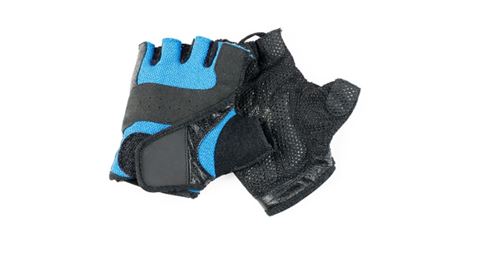
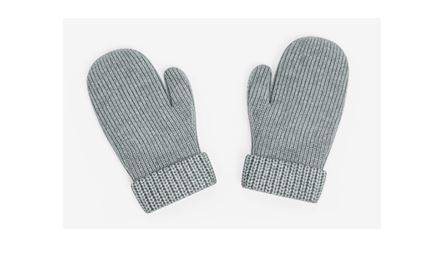
Outer Surface (i.e. exterior shell): The outer surface material of a glove covering the palm of the hand, the back of the hand and, where applicable, the fingers (including fourchettes) and the wrist, the forearm, and the upper arm.
Fourchettes: A narrow, forked strip of material joining the front and back sections of the fingers of a glove.
Lining: The inside constituent material(s) of a glove.
Gloves are classified according to the constituent material or materials which form the outer surface or the exterior shell.
1. The outer surface of most glove types is often composed of more than one constituent material, the classification of which might fall into different chapters or headings. In order to properly classify such gloves, all individual outer surface constituent materials must be properly identified. Tariff classification of the gloves is based on the tariff classification of these constituent materials and the application of the pertinent General Rules for the Interpretation of the Harmonized System (GIRs).
Gloves with an exterior surface composed of a single material
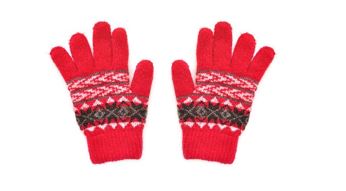
2. Gloves whose exterior is composed of a single material are classified according to the outer surface material.
How to determine the constituent materials
3. In order to properly identify the constituent materials, the importer must be able to provide the exact composition of the outer surface (exterior shell) of a glove, usually through detailed product literature from the manufacturer, or an independent laboratory analysis. Additionally, a CBSA laboratory analysis of the outer surface of the glove may be required in order to get a precise identification of the constituent materials of the exterior shell of the glove.
4. The Canadian International Trade Tribunal (CITT) decision AP-2009-046 (Igloo Vikski Inc.), upheld by the Supreme Court of Canada (SCC), as well as CITT decision AP-2009-045 (Sher-wood Hockey Inc.), provide direction on the tariff classification of gloves using only the outer surface or the shell of the glove, despite the presence of tufting, padding or other materials (e.g., plastics) in other areas.
5. To determine the tariff classification of the constituent materials of a glove whose exterior material is made from a combination of plastics or rubber and a textile, please refer to the Notes to Section XI and the pertinent chapters and headings (e.g. Chapters 56, 59, and heading 60.01).
6. For specific guidance on the tariff classification of textiles combined with cellular plastics, please refer to Memorandum D10-14-59 - Tariff Classification of Textile Fabric or Material Combined With Plates, Sheets or Strips of Cellular Plastic, and Garments Made up of Such Fabric.
7. If the textile combination is excluded from Chapter 56 or 59 or heading 60.01 as a result of the application of the pertinent Notes, the gloves would fall under heading 39.26 or heading 40.15.
8. When gloves are for use in a noxious atmosphere, please refer to Memorandum D10-15-26 - Goods to be employed in a Noxious Atmosphere which provides direction on the interpretation and application of the expression “to be employed in a noxious atmosphere” and the pertinent tariff classification.
Gloves dipped in plastics or rubber (“dipped gloves”)

9. For clarification, Legal Note 11 to Section XI states:
“For the purposes of this Section, the expression “impregnated” includes “dipped”."
10. “Dipped gloves” differ from gloves made up of a coated textile fabric of Chapter 56 or 59 or heading 60.01, in that they are already manufactured textile gloves that are subsequently dipped in plastics or rubber, whereas gloves made up of a fabric of Chapter 56 or 59 or heading 60.01 are gloves made from a textile that has been previously coated prior to being made into a glove. For “dipped gloves”, the amount of the exterior surface covered by the coating may vary, for example, from the entire glove to as little as only the fingertips, but has no bearing on the tariff classification of the glove.
11. Subheading 6116.10 covers “Gloves, mittens and mitts, knitted or crocheted – Impregnated, coated or covered with plastics or rubber”. This subheading covers pre-existing gloves of textile materials of Chapter 60, which are subsequently covered, dipped, etc., in plastics or rubber, regardless of the extent of the area covered by the plastics or rubber.
Gloves with an exterior surface composed of two or more materials
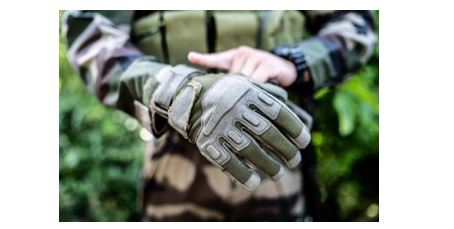
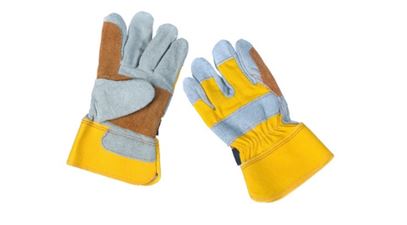
12. Tariff classification of gloves with an exterior surface of two or more materials is based on the tariff classification of the individual constituent materials and the application of the pertinent GIRs.
13. In some cases, tariff classification cannot be achieved by applying GIR 1 alone. For gloves with an exterior surface made up of two or more materials, GIR 2(b) could apply. GIR 2(b) states that any reference in a heading to goods of a given material shall be taken to include a reference to goods consisting wholly or partly of that material. However, this Rule does not broaden the scope of a heading to cover goods which cannot meet the description in the heading. The gloves should still have the character of goods of the kind described in the heading for them to be classified under that heading according to GIR 2(b).
14. If, however, after applying GIR 1 then 2, the gloves are classifiable under more than one heading, then tariff classification is directed to GIR 3.
15. GIR 3(a) states that the heading which provides the most specific description of the good is to be preferred to a heading which provides a more general description. However, when two or more headings each refer to part only of the materials contained in the goods, those headings are to be regarded as equally specific and tariff classification of the goods shall be determined by Rule 3(b) or Rule 3(c).
16. GIR 3(b) states that composite goods consisting of different materials are to be classified as if they consisted of the material which gives them their essential character. For some gloves, the material forming the greatest outer surface area might provide the essential character, and thus, the gloves would be classified in the heading that provides for gloves of that material.
17. However, as it is often difficult to determine the “essential character” for the purposes of GIR 3(b) for gloves whose outer surface is made of multiple material constituents, classification should then be directed toward GIR 3(c). According to this Rule, when goods cannot be classified by Rule 3(a) or 3(b), they are to be classified in the heading which occurs last in numerical order among those which equally merit consideration. For example, if a glove is made up partly of a knitted or crocheted fabric and partly of a woven fabric and neither part provides the glove its essential character, tariff classification would be determined according to GIR 3(c). The glove would therefore be classified under heading 62.16 as gloves, other than knitted or crocheted.
Gloves used in sporting activities (i.e. sports requisites)


18. Legal Note 1(v) to Chapter 95 specifically excludes gloves, mittens and mitts and directs tariff classification according to their constituent material. Sports gloves are classified by their constituent material.
Gloves of leather and/or furskin

19. Leather gloves combined with either furskin or faux-fur (artificial fur) are classified in heading 42.03 irrespective of the proportions of these constituents. However, gloves made up wholly of furskin are classified in heading 43.03 and gloves made up wholly of artificial fur are classified in heading 43.04. Please note that artificial fur of heading 43.04 excludes long pile fabrics of heading 58.01 (woven pile fabrics) and heading 60.01 (knitted pile fabrics) which are both classified as textile fabrics.
20. Gloves of imitation leather, which is often difficult to distinguish from real leather, are not classified as gloves of leather or composition leather of heading 42.03. Imitation leather is based on materials such as plastics (Chapter 39), rubber (Chapter 40), paper or paperboard (Chapter 48) or coated textile fabrics (Chapter 59). Gloves made from those materials are classified in their appropriate Chapter and corresponding heading.
21. Subheading 4203.21 covers gloves, mittens and mitts, specially designed for use in sports. According to its Subheading Explanatory Note, this subheading includes gloves, mittens and mitts having functional design features which make them particularly suitable for use in sports such as to protect the hands or assist the holding of equipment.
Glove linings
22. Removable glove linings presented separately are to be considered “parts” of clothing accessories. The glove parts should be evidently for use as linings. For example, they may be fitted with snaps or fasteners to secure them to the gloves.
23. Textile glove linings are classified under either tariff item 6117.90.90 for knit fabric linings or 6217.90.00 for all other textile fabric linings.
24. In the case of a combination of two or more materials (e.g. textile and non-textile), the same rules apply as for the outer surface materials of a glove.
Additional Information
25. For certainty regarding the tariff classification of a product, importers may request an advance ruling. Details on how to make such a request are found in CBSA Memorandum D11-11-3, Advance Rulings for Tariff Classification.
26. For more information, call contact the CBSA Border Information Service (BIS):
Calls within Canada & the United States (toll free): 1-800-461-9999
Calls outside Canada & the United States (long distance charges apply):
1-204-983-3550 or 1-506-636-5064
TTY: 1-866-335-3237
Contact Us online (webform)
Contact Us at the CBSA website
References
- Issuing office:
- Trade and Anti-dumping Programs Directorate
- Headquarters file:
- Legislative references:
- Customs Tariff
Departmental Consolidation of the Customs Tariff - Other references:
- D10-14-59, D10-15-26, D11-11-3
CITT Appeals: AP-2009-046, AP-2009-045 - Superseded memorandum D:
- D10-14-29 dated
Page details
- Date modified: